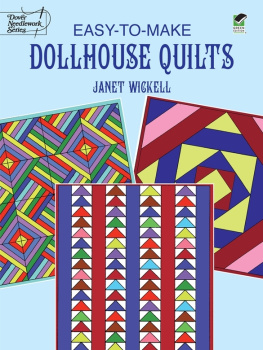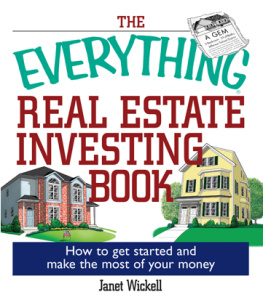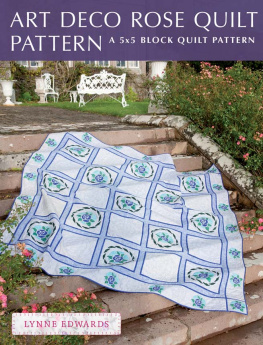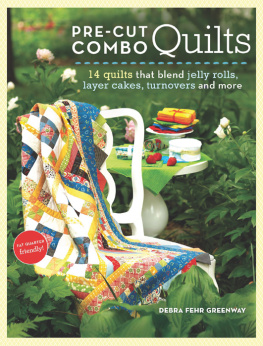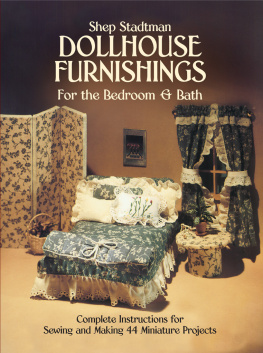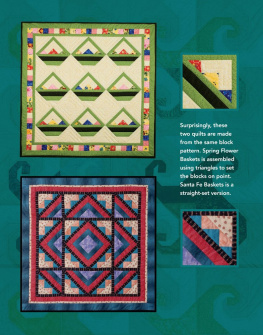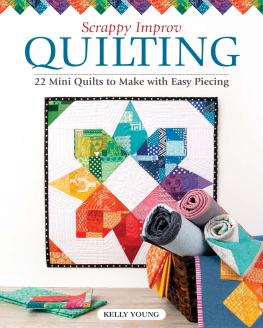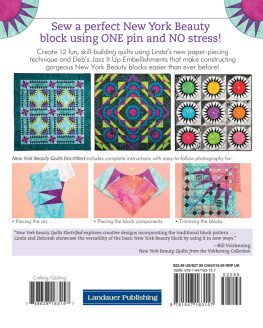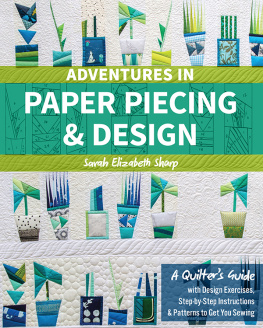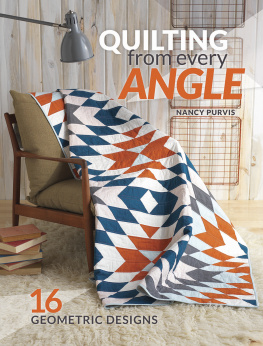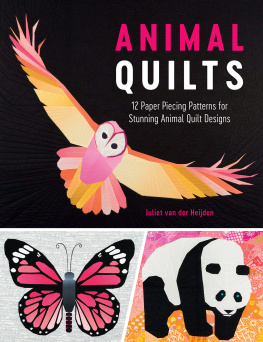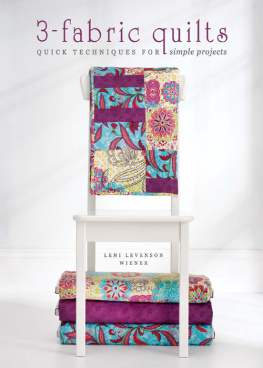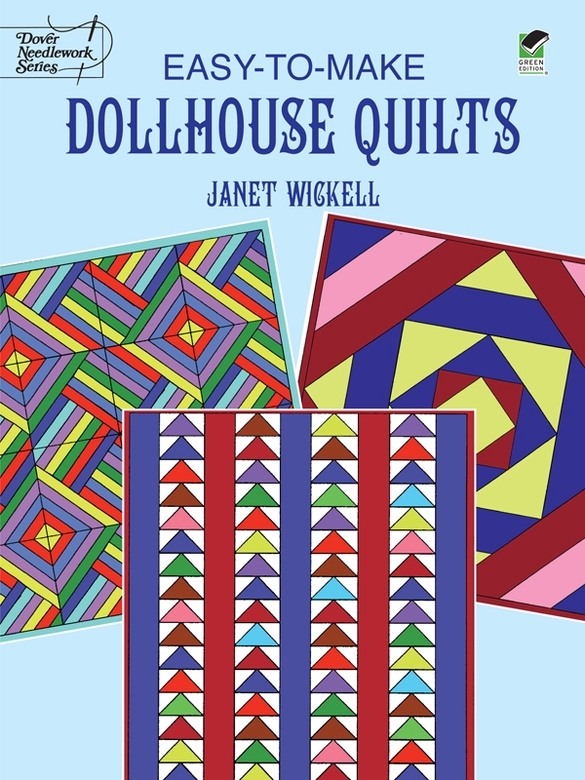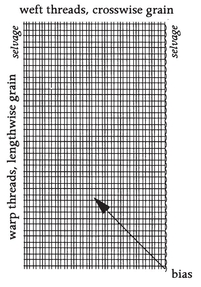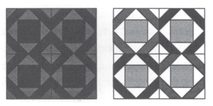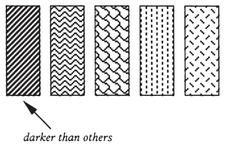Quick Little Quilts . The Quilt Digest Press, Lincolnwood, Illinois, 1998. Coauthor, Donna Stidman.
Getting Started with Fabrics
Selecting Fabrics and Thread
- I recommend you use 100% cotton fabrics for your dollhouse quilts, rather than cotton/polyester blends. Cotton wears well, is easy to work with, and frays less than blended fabrics.
- Match thread content with fabric content. Over time, thread that is stronger than fabric cuts into fibers, creating rips at seams. One hundred percent cotton thread is the best partner for cotton fabrics.
- Other fabric choices include lightweight satins and silks. Note the manufacturers care instructions when using special fabrics.
Test for Colorfastness
Some dark cottons bleed or lose their dyes, particularly dark purples, blues, and reds. Always test suspected fabrics to be sure they are colorfast.
- Submerge a small piece of fabric in warm, soapy water. See if dye bleeds into water. Or, place the wet patch on a white paper towel. Check to see if dye bleeds onto the towel.
If a fabric bleeds, wash it a few times and check again. If the problem continues, dont use the fabric in a quilt. You might try setting the dye with a commercial fixative, such as Retayne.
Fabric Shrinkage & Pre-washing
All 100% cottons shrink. Fabrics with low thread counts shrink more than tightly-woven fabrics do, because as fibers relax in water they tend to fill-in the larger gaps between threads. If the blocks in your quilt contain unwashed fabrics that shrink at different rates, distortions will occur when the quilts are dampened. Even small distortions are noticeable in these little quilts, so play it safe and prewash unless you are sure the quilt will never get wet.
Prewashing removes most of the loose sizings and protectants that were applied to fabric at the mill. Use spray starch if you prefer to work with crisper fabrics.
Prewash your fabrics in cool water with a mild, phosphate-free soap.
Understanding Fabric Grain
Have you been to a craft fair, where you watched someone weaving on a loom? Quilting cottons are made in the same way, although much of the process is automated, and on a larger scale.
Long threads, called warp threads, are stretched on the loom and secured. These threads become the lengthwise grain of the fabric.
Weft threads are woven back and forth along the entire length of the warp threads. The weft threads become the fabrics crosswise grain.
Selvages , the bound edges along the sides of fabric, are formed when the weft threads change direction as the weaving process travels down the length of the loom.
True bias is defined as a 45 angle to the straight of grain, but we refer to any off-grain cut as a bias cut. Fabric is very stretchy along the bias.
The lengthwise and crosswise threads are both referred to as straight-of-grain, however, the lengthwise grain is less stretchy. Unlike the moving weft threads, warp threads were firmly attached to the loom during the weaving process, and the interlaced weft threads actually help stabilize them. There are usually more warp threads than weft threads per square inch, another stabilizing factor. Lengthwise grain strips make sturdy anchors for quilt borders and sashing.
The following test helps you see the variations in stretch along the different grains
1. Cut a 3-inch square of fabric with edges parallel to the straight grains. Tug on it along the lengthwise grain, then along the crosswise grain. Did you notice a difference in stretch?
2. Now tug on it from corner to corner, along the bias. The fabric will stretch even more, and may become permanently distorted.
Recognizing the different properties of grains gives you a better understanding of why pattern pieces are cut in specific ways.
Selecting Prints
One of the most important aspects of fabric selection is variety. Do you want to make a scrappy quilt, one that contains a wide variety of fabrics? Or do you want to follow a more structured, repeating color scheme? Even quilts made with a minimum number of fabrics benefit when you include a variety of print sizes, because they add visual interest and texture to the piece.
Print selection is a little different for dollhouse miniatures, because the size of each patch in a block is so small. One way to help visualize what a print will actually look like in your quilt is to make a window template, which is simply a cutout of an individual patch.
1. Trace a copy of the foundation template for your quilt. Do not include the outer seam allowance.
2. Cut out only the individual patch shape the fabric is intended for.
3. Position the cutout against fabric to see how it will appear in the block. Repeat with additional patches or fabrics if desired.
If the fabric is a medium to large print, chances are the patch will look very different when placed on different areas of the fabric. It doesnt mean you shouldnt use the print, but do be aware that patches wont all look alike unless you take special care to cut and sew each piece in the same manner.
A useful print type for any quilt, including miniatures, is a print that reads as a solid. In other words, from a distance it appears to be solid, but on closer inspection you discover a subtle print. These prints introduce texture to a quilt, without adding clutter.
As you build a fabric collection, add fabrics from all color families, even those you dont particularly like. Dont hesitate to use colors together in ways you never imagined. Look at nature, because colors are often combined in ways we dont think of as matching. Be a good observer, and try to recreate what you see in cloth.
Since dollhouse minis require only small amounts of each fabric, you might consider purchasing assortments of precut six or ten inch squares. They are available from many quilt shops and mail order sources, and are an inexpensive way to add variety to your fabric stash.
Color Value
Stated simply, color value refers to how dark or light a fabric is in relation to others. The amount of contrast between adjoining patches can change the appearance of a block or quilt.
To sort by value
- Pin fabrics you think are of similar value to a wall and stand back. Do any pop out at you as definitely lighter or darker than the others? Remove them from the group and check again.
- Make black-and-white photocopies of fabric swatches, because color often clouds our judgement. When it is removed, its easier to judge the true value of a fabric.
- Use a value filter to view fabrics. The filter masks color, giving you a black and white image of fabrics. Take care, most of these filters are red, which makes it difficult to judge red fabrics in relation to others.
If you feel uncertain about fabric selection, browse the library or quilt shops for a book about fabrics and color. There are several written specifically for quilters. Visit quilt exhibits to see how others have combined colors. Most of all, experiment yourself to discover which combinations you like best.

